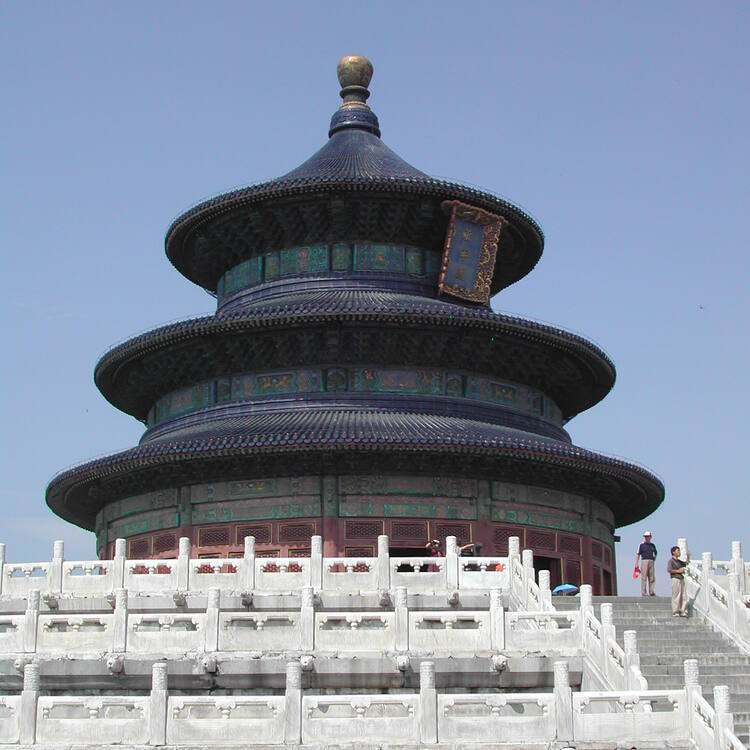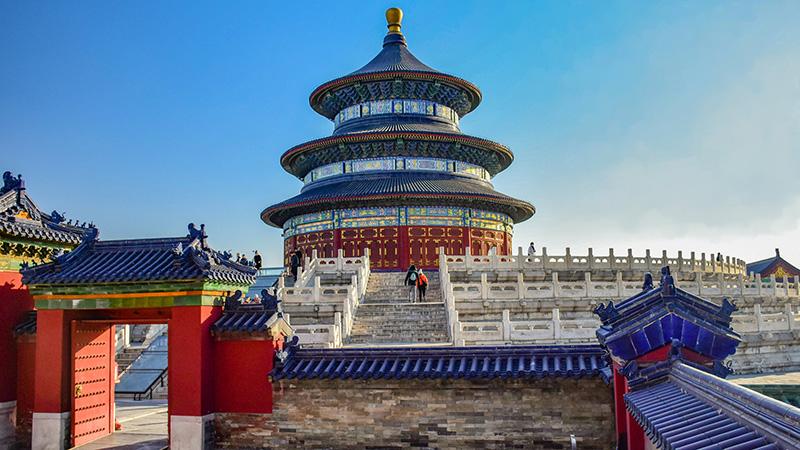Visiting Beijing’s Temple of Heaven and Spiritual History

Welcome to Jusha Travel, your go-to source for exploring the wonders of China! If you’re fascinated by Beijing cultural landmarks like the Beijing Temple of Heaven, you’re in for a treat. This iconic site offers a deep dive into China spiritual history, blending ancient rituals with stunning architecture. As we guide you through this Cultural attractions Beijing gem, we’ll uncover its significance for travelers eager to connect with China’s rich heritage. Whether you’re planning a Beijing travel guide adventure or considering China heritage tours, the Temple of Heaven promises an unforgettable experience that bridges the past and present. Here at jusha.travel, we love sharing tips to make your China journey unforgettable!
The Origins and Historical Significance of the Temple of Heaven

The Beijing Temple of Heaven stands as a testament to China’s imperial past, a site where emperors once sought divine favor. Constructed between 1406 and 1420 during the Ming Dynasty’s Yongle Emperor’s reign, this vast complex was designed for solemn rituals that emphasized the emperor’s role as the “Son of Heaven.” For those on China heritage tours, understanding this history reveals how ancient beliefs in cosmic harmony shaped Beijing cultural landmarks. According to historical sources like Wikipedia’s entry on the Temple of Heaven, the site was built alongside the Forbidden City, underscoring its importance in the capital’s layout.
Emperors performed sacrifices here to pray for good harvests and national prosperity, a practice rooted in China spiritual history. The temple’s expansion under the Jiajing Emperor in the 16th century further solidified its status, linking it to broader cosmological beliefs, including the construction of complementary temples for Earth, Sun, and Moon. This era highlights the intricate blend of spirituality and statecraft in ancient China. As a traveler, imagine standing in the same spot where emperors prostrated themselves—it’s a humbling reminder of how Cultural attractions Beijing like this one continue to inspire awe.
For practical tips, visit early in the morning to avoid crowds and witness locals practicing tai chi, a nod to ongoing cultural traditions. If you’re exploring Beijing travel guide essentials, pair your visit with nearby sites like Tiananmen Square for a fuller picture of Beijing’s historical tapestry.
Architectural Marvels and Layout of the Temple of Heaven

Spanning an impressive 267 hectares, the Temple of Heaven is not just a Beijing cultural landmark; it’s a masterpiece of design that mirrors ancient Chinese cosmology. The layout, with its circular structures symbolizing heaven and square enclosures representing earth, offers a visual lesson in China spiritual history. As detailed in resources such as this ultimate guide from LTL Beijing, the site’s architecture was ingeniously planned to facilitate imperial ceremonies.
At the heart of it all is the Hall of Prayer for Good Harvests, a triple-gabled marvel with a 38-meter-high blue-tiled roof that evokes the vast sky. Its 28 pillars inside represent the four seasons, 12 months, and 12 two-hour periods of the day—subtle nods to the cyclical nature of life that resonate with Cultural attractions Beijing enthusiasts. Nearby, the Imperial Vault of Heaven features the famous Echo Wall, where whispers travel across its curved surface, symbolizing divine communication. Don’t miss the Circular Mound Altar, an open-air platform where emperors stood at the center to connect with the heavens during winter solstice rituals.
For modern travelers on a Beijing travel guide itinerary, navigating this site is straightforward via public transport, but take time to wander the ancient cypress groves that add a serene, spiritual ambiance. A fun tip: Test the Echo Wall with a friend—it’s a lighthearted way to engage with the site’s acoustic wonders. And if you’re interested in technology’s role in preservation, note how digital tools like VR tours are enhancing accessibility, aligning with Jusha Travel’s focus on innovative China experiences.
Spiritual and Cultural Importance in Today’s Context

Beyond its physical beauty, the Temple of Heaven embodies the essence of China spiritual history, where heaven worship was central to imperial legitimacy. Emperors viewed themselves as intermediaries between heaven and earth, performing elaborate sacrifices to maintain cosmic balance—a concept that still echoes in contemporary Chinese philosophy. As explored in this historical account, these rituals weren’t just religious; they ensured social stability and good harvests, reflecting the deep interconnection between culture and governance.
Today, as a UNESCO World Heritage Site—detailed on the official UNESCO page—the temple serves as a living museum of Cultural attractions Beijing. Visitors can witness locals engaging in traditional activities like tai chi or folk singing, blending ancient customs with daily life. This site highlights how Beijing cultural landmarks evolve, offering insights into China’s enduring spiritual traditions amidst rapid modernization.
If you’re on a China heritage tours adventure, consider the cultural parallels with other sites, like how food plays a role in spiritual practices—think of the symbolic foods offered during festivals. An interesting fact: The temple’s design influences modern architecture, including some of Beijing’s tech hubs, showing how Beijing Temple of Heaven‘s legacy inspires innovation. To make your visit more meaningful, join a guided tour that incorporates storytelling, helping you appreciate the nuances of Chinese heritage.
Restoration, Modern-Day Use, and Essential Visitor Tips
After years of neglect following the Qing Dynasty’s fall, the Temple of Heaven has undergone significant restoration, transforming it into a vibrant public park. As noted in this comprehensive guide, efforts in the 20th and 21st centuries have preserved its structures while adapting it for contemporary use. Today, it attracts millions, serving as a space for community activities alongside its role as a Beijing travel guide highlight.
For first-time visitors, the best time to explore is early morning, when the park buzzes with locals practicing exercises—a perfect blend of Cultural attractions Beijing and everyday life. Prioritize key sights like the Hall of Prayer and Circular Mound Altar, but allocate time for the serene gardens. Practical advice: Wear comfortable shoes for the expansive grounds, and use apps for audio guides to enhance your experience with technology.
When visiting, be culturally sensitive—avoid loud noises in sacred areas to respect its spiritual roots. If you’re into food, pair your trip with nearby street eats like jianbing (a savory crepe), tying into Jusha Travel’s emphasis on China’s culinary scene. For families or solo travelers, this site offers something for everyone, from historical depth to peaceful reflection.
In conclusion, the Beijing Temple of Heaven is more than just a stop on your China heritage tours; it’s a gateway to understanding China spiritual history and the enduring allure of Beijing cultural landmarks. From its imperial origins to its modern revival, this site captures the heart of what makes Cultural attractions Beijing so captivating. We at jusha.travel hope this guide inspires you to delve deeper into China’s treasures and create lasting memories.
What are your thoughts on the Temple of Heaven? Have you visited any other Beijing travel guide spots? Share your experiences in the comments below, explore more articles on jusha.travel for additional China travel inspiration, or check out our related posts on ancient rituals and modern Beijing adventures. Safe travels!

